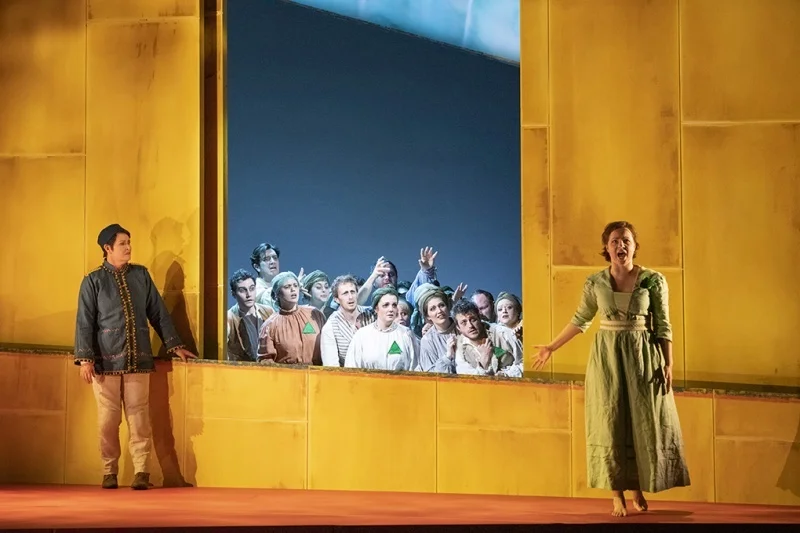DIAL M FOR MURDER AT THE ARTS THEATRE
Four fabulous actors take you along the brink of suspense in this classic thriller – the set, the plot, the outfits all make for a glamorous night in the theatre. In this production everyone is super-sexy, the plot rattles along and the suspense is mind-twisting. Dial M for Murder is packed with subtle detail, rammed with irony and hugely stimulating to watch.
Written in 1951 this thriller evokes the post war era like few of its kind. Author Frederick Knott, a privileged son of Lancashire mill-owning family yearned to hit the high spots in the film world – and wrote a classic work that is so full of intrigue and double bluff , it has the audience on the hook to the last gasp . Dial M for Murderis a physical experience. Its so-very- satisfying plot racks up the tension all evening . Little wonder it became a huge hit in the West End and famously an Alfred Hitchcock film starring the style heroine of the day, Grace Kelly.
It is all very 1950s. The costumes are worth the ticket alone, from the leading lady’s baby-doll pyjamas under cream silk negligée to her slack and pumps ensembles even at the most threatening of scenes – Margot Wendice’s idea of a theatre outfit is a dazzling little black cocktail frock and an enviable up-do. All the leggy male actors sport fabulous slim -line suits with dashing de-mob haircuts . If the post war era was deprived and shabby elsewhere, in this Maida Vale flat everything is top notch G -Plan elegance. Actually the entire look is remarkably cool for today’s audience.
The action opens with a torrid love scene between Max Halliday and his lover Margot Wendice. Max is a screenwriter and jokes about how he has to kill someone every week.- already the ambiguity hovers over the set. Sex and death – and humour, make a potent elixir for any audience. Diana Vickers and Michael Salami make a brilliant mise en scene seem both erotic and threatened. Margot is married to ex tennis pro Tony yet to make his alarming appearance but here in the first scene, both actors convince with their combination of naiveté and mis -apprehension. Yet how could they know what is in store for them? We certainly don’t but when husband Tony appears we have a strong feeling it isn’t going to be pleasant. Tom Chambers storms this role in a mixture of affability and threat. He is borderline maniacal but is so expertly in charge of his own psychopathic reasoning he still manages to convince the innocents (ironically the unfaithful wife and cheating friend) he is up to nothing but good. Strange how an actor can convey the sense of someone you’ve known somewhere – even whilst playing a charming schemer like Tony Wendice.
There are some wonderful performances in this piece. Not only is Tom Chambers superbly convincing as a villain but his interaction with other men is a chilling blend of bravura and distorted gay menace. Noel Coward liked the fact that he ‘never opens his mouth in the whole play (except in one scene) without lying.’ That scene is a masterly interplay between the manipulative Tony and the man he hires to kill his wife. Christopher Harper is inspired as the cashiered war hero ( a word you don’t hear much today, but the desperate fate of disgraced army officers). I had difficulty convincing my companion that Christopher Harper was one and the same actor as Inspector Hubbard, the canny Northern investigator.
You might imagine this review has given the game away – very far from the truth for an intricate breath-catcher of a playwright who is three steps ahead of the audience.
Yes, this play has been around the block many times - so credit and congratulations to this super talented cast for a freshly sinister feel to the entire production.







